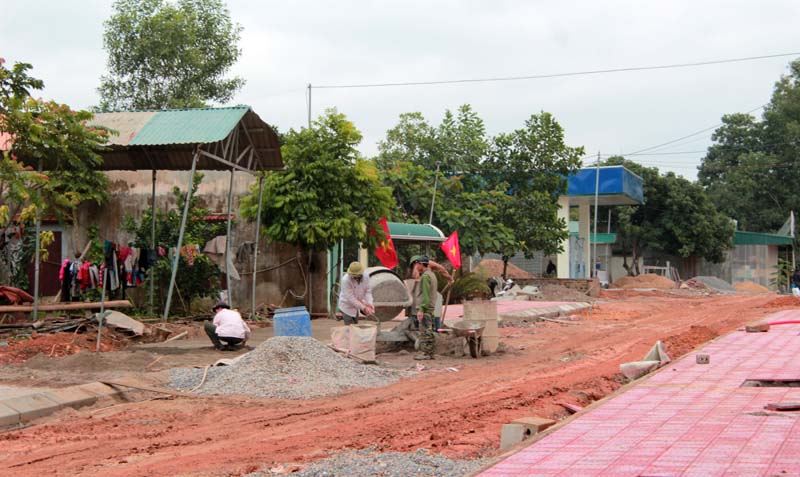



Lien Hoa commune (Lac Thuy) is hardening the
commune center road to ensure convenient traffic and trade of goods for people.
With the motto "State and people work
together", the district has built many beautiful and clean concrete roads
during the past time. The
inter-communal, inter-village and intra-field roads have been renovated and
upgraded, the rural appearance has been renewed step by step, contributing to
the socio-economic development. In 2018, the district's resources to implement
the second criterion were VND 27,432 million VND. Through the assessment, the
rate of the hardened district roads have reached 100%; the commune roads have
been nearly 70%, the village and hamlet roads have reached over 51%, the lanes
of the hamlet have been over 63% and the inland roads have reached over 44%.
Mr. Vu Hung Man, the head of Lac Thuy
Economic and Infrastructure Department says that implementing the project of
hardening rural roads, in 2018 with the motto "State and people work
together", the whole district has been hardened 75km/22 routes. In 2019,
the district has planned to harden 83.3km/199 routes, of which the village and
inter-village roads are 11.9 km /15 routes, the lane roads are 42.9 km / 139
routes, the main roads and the inland roads are 28.46km/ 45 routes.
Besides, the District People's Committee has
directed the communes to launch a campaign to build the rural transport and
intra-field traffic every year. In 2018, the district launched two campaigns,
mobilizing the working days, the materials and machine shifts to build rural
transport with the expense of over 5 billion VND, maintaining and repairing the
district and commune axis roads, the inter-village and inter-hamlet roads, the
hamlet and internal-field roads. In addition, the Economic and Infrastructure
Department has advised the District People's Committee to direct the communes and
town to regularly maintain and repair the rural roads. The teams, the groups of
the households and self-management associations are responsible for managing,
maintaining and repairing the assigned roads to promptly ensure safety for the
people and means participating in traffic and convenient goods transportation,
contributing to the local socio-economic development.